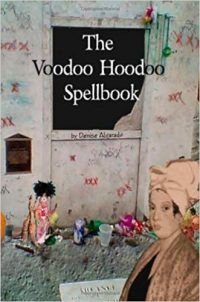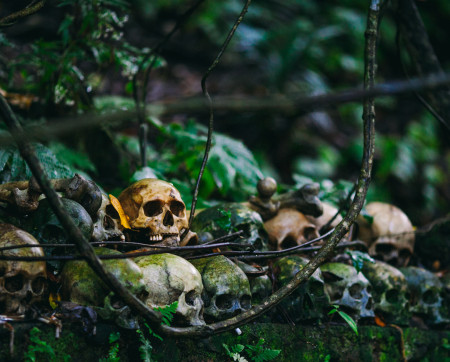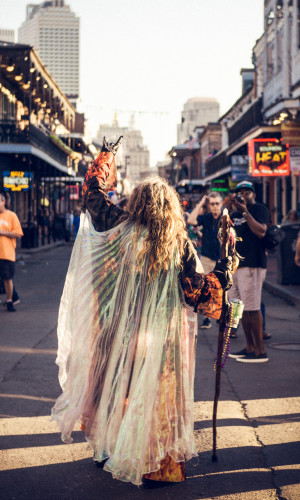Anyone can practice voodoo in New Orleans—embraced by people no matter their race, creed, or origin—there are no standard worship practices, in this flexible and inclusive spiritual and religious practice. A religion so immersed in mystery, voodoo is often mistaken for something much more sinister. First introduced to the United States through the repugnant practice of slavery, it originated from the Fon people of West Africa and was then intermixed with European cultural influences, as well as Native American herbalism and spiritual practices.
In Denise Alvarado’s The Voodoo Hoodoo Spellbook, it’s explained that voodoo and hoodoo are not the same, despite the how often they are confused for one another. Incredibly complementary in nature, voodoo and hoodoo in New Orleans are melded together in a practice endearingly referred to as voodoo hoodoo, something that is distinct to the region—elsewhere, voodoo is strictly a religion and hoodoo is strictly a folk magic practice. New Orleans is a mixing pot—multiple cultures converging together, the influences of voodoo are so incredibly diverse that it’s no wonder why those who aren’t involved in the religion would be confused about the whole thing.

Well, here is where the confusion clears—like it was mentioned before, voodoo is a religion, while hoodoo is a practice. Voodoo practitioners believe in a single supreme creator, known as Bondye, which in French Creole stands for “good god.” There is no mention of only good or only evil beings in the religion—instead it is a practice that embraces the good and bad in all situations, where spirits known as the loa act as messengers for Bondye. Despite there being a single god, the loa, also known as lwa, are the ones that practitioners communicate with. Frequently likened to the saints in Catholicism, there is a loa to contact in regards to nearly every aspect of normal life.
Popular media insists that New Orleans voodoo is an ominous, evil tradition—this is based on the demonization of the unique practices within the religion. During the reign of the infamous Voodoo Queen of New Orleans, Marie Laveau, the use of voodoo dolls came into common use, like gris gris (gree-gree), as a form of talismanic magic. There is an odd tradition of depicting voodoo dolls are objects of revenge—ways for malevolent practitioners to send destruction and pain into the lives of their targets. The majority of Voodoo practitioners have been actively working against this negative media presence, showing that most voodoo dolls are centered on healing, finding true love, and obtaining spiritual guidance. Just like Marie Laveau, it seeks to help those in need—to feed the hungry, help the poor, and curing ailments such as anxiety, addictions, depression, and loneliness are mainstays of this religion.
All in all, it seems that those who are a part of the voodoo religion actually prefer to keep their beliefs and practices to themselves, you won’t find any legitimate practitioners displaying their rituals in public, as this would be considered disrespectful to the spirits. This is fair, considering the amount of public bile that spills over into their culture whenever it is brought to light anywhere else in the United States. Privacy is often more pleasant than negativity when it comes to personal beliefs.

Georgia-based author and artist, Mary has been a horror aficionado since the mid-2000s. Originally a hobby artist and writer, she found her niche in the horror industry in late 2019 and hasn’t looked back since. Mary’s evolution into a horror expert allowed her to express herself truly for the first time in her life. Now, she prides herself on indulging in the stuff of nightmares.
Mary also moonlights as a content creator across multiple social media platforms—breaking down horror tropes on YouTube, as well as playing horror games and broadcasting live digital art sessions on Twitch.




2 replies on “Voodoo on the Bayou”
The photo at the top of article…. Is this of Voodoo Man?
Never mind. Answered my own question. ☺